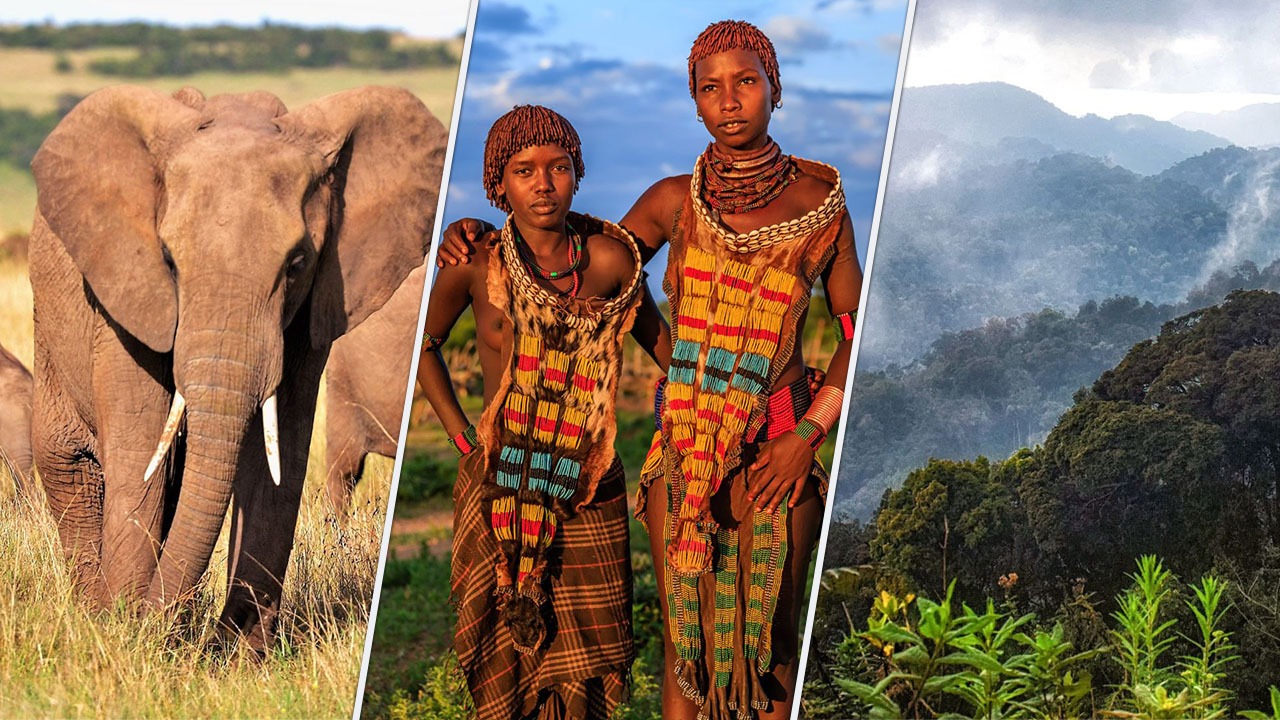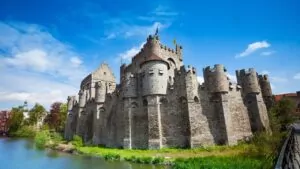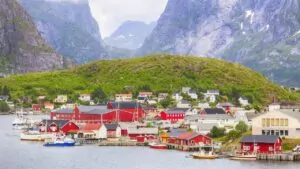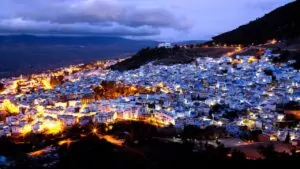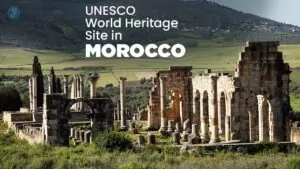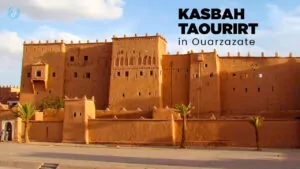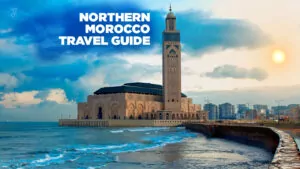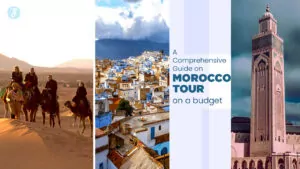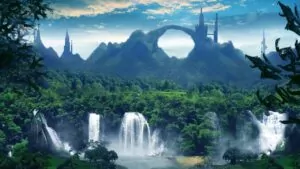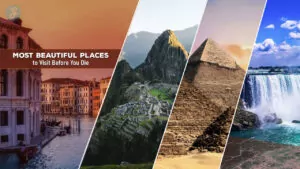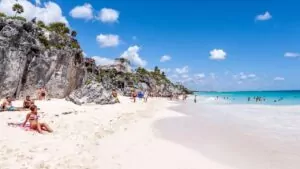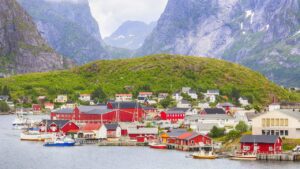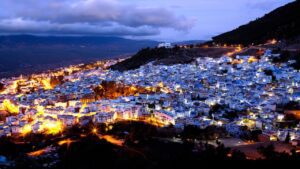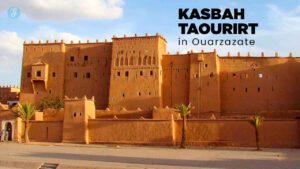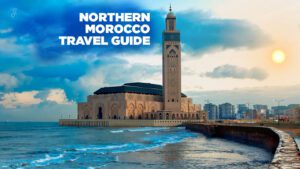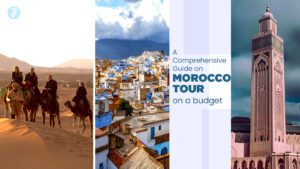Discover the treasure trove of natural wonders, rich cultures, and hidden gems in Africa, the world’s second-largest continent. While popular destinations like Egypt, South Africa, and Kenya often steal the spotlight, there are countless unexplored corners of this vast continent that offer unique and unforgettable experiences for adventurous travelers.
In this article, we’ll take you on a journey through ten of Africa’s best-kept secrets—destinations that are off the beaten path but brimming with potential for incredible adventures.
So, pack your bags, put on your explorer’s hat, and get ready to uncover Africa’s secrets. These ten unexplored destinations are calling, and now is the perfect time to answer that call. Let’s dive into the heart of Africa’s undiscovered wonders!
1. São Tomé and Príncipe: Africa’s Island Paradise
Nestled in the Gulf of Guinea, off the western coast of Central Africa lies the tiny island nation of São Tomé and Príncipe. This tropical paradise is one of Africa’s smallest countries and remains largely undiscovered by mass tourism.
Natural Beauty
São Tomé and Príncipe boasts pristine beaches, lush rainforests, and towering volcanic peaks. The islands are home to a diverse array of flora and fauna, including many endemic species found nowhere else on Earth. Obo National Park, covering about 30% of São Tomé, is a hiker’s dream with its dense jungles and panoramic viewpoints.
Cultural Heritage
Portuguese colonization and the cocoa industry have shaped the islands’ rich history. Visitors can explore colonial-era plantations, known as “roças,” which offer a glimpse into the country’s past. The capital, São Tomé City, features charming Portuguese architecture and colorful markets.
Activities and Attractions
- Beach hopping: Discover secluded coves and golden sand beaches like Praia Jalé and Praia Piscina.
- Birdwatching: Spot rare species like the São Tomé grosbeak and the Príncipe thrush.
- Snorkeling and diving: Explore vibrant coral reefs and underwater caves.
- Chocolate tasting: Sample some of the world’s finest organic chocolate produced on the islands.
Travel Tips
- Best time to visit: June to September for drier weather
- Language: Portuguese is the official language, but many locals also speak Creole.
- Currency: São Tomé and Príncipe dobra (STD)
São Tomé and Príncipe offers a unique blend of African and Portuguese influences, set against a backdrop of stunning natural beauty. It’s an ideal destination for travelers seeking an off-the-grid tropical getaway with a rich cultural twist.
2. Djenné, Mali: A Living Museum of Mud Architecture
In the heart of Mali, West Africa, lies the ancient city of Djenné. This UNESCO World Heritage site is renowned for its extraordinary mud brick (adobe) architecture and its role as a center of Islamic learning and commerce for centuries.
Historical Significance
Founded between 800 and 1250 AD, Djenné quickly emerged as a crucial link in the trans-Saharan gold trade. The city’s strategic location near the Bani River allowed it to flourish as a hub of commerce and Islamic scholarship.
Architectural Marvel
The most iconic structure in Djenné is the Great Mosque, the largest mud brick building in the world. Built in 1907 on the site of an earlier mosque, it’s a masterpiece of Sudano-Sahelian architecture. Sunbaked mud bricks construct the entire city, giving it a uniform and striking appearance.
Cultural Experience
Djenné’s Monday market is a vibrant spectacle, drawing people from surrounding villages. The market sprawls in front of the Great Mosque, offering a colorful array of goods and a chance to experience local life.
Activities and Attractions
- Take a tour of the Great Mosque, keeping in mind that non-Muslims cannot enter.
- Explore the old town’s narrow streets.
- Visit the Djenné Museum to learn about local history and archaeology.
- Witness the annual replastering of the Great Mosque, a community event usually held in April or May
Travel Tips
- Best time to visit: November to February, when temperatures are milder.
- Language: Many people speak Bambara and French.
- Currency: West African CFA franc (XOF)
- Travel advisory: Check current safety situations before planning your trip, as Mali has faced security challenges in recent years.
Djenné offers a unique glimpse into West African history and architecture. Its otherworldly appearance and rich cultural heritage make it a fascinating destination for those interested in African history, Islamic architecture, and traditional ways of life.
3. Nyungwe National Park, Rwanda: A Primate Paradise
While Rwanda is famous for its mountain gorillas in Volcanoes National Park, the lesser-known Nyungwe National Park in the southwest of the country is a hidden gem for nature lovers and primate enthusiasts.
Biodiversity Hotspot
Nyungwe is one of the oldest rainforests in Africa, dating back to before the last Ice Age. It’s home to an incredible array of biodiversity, including:
- Over 1,000 plant species
- 13 primate species
- 310 bird species (including 27 endemic to the Albertine Rift)
- 75 mammal species
- Numerous reptiles and amphibians
Primate Encounters
The park is particularly known for its primate population. Visitors are afforded the opportunity to trek and observe:
- Chimpanzees
- Black and white colobus monkeys
- L’Hoest’s monkeys
- Grey-cheeked mangabeys
Activities and Attractions
- Canopy walkway: A 70-meter-high suspension bridge offering breathtaking views of the forest canopy
- Waterfall trails: hike to beautiful cascades, such as the Isumo waterfall.
- Birdwatching: spot colorful and rare species, such as the great blue turaco.
- Visit tea plantations: Explore nearby tea estates and learn about Rwanda’s tea industry.
Conservation Efforts
Nyungwe National Park plays a crucial role in conservation efforts in the region. The park’s management focuses on:
- Protecting endangered species
- Promoting sustainable tourism
- Engaging local communities in conservation
Travel Tips
- Best time to visit: June to September (dry season) for easier hiking, but the park is open year-round.
- Language: Most people speak Kinyarwanda, English, and French.
- Currency: Rwandan franc (RWF)
- Accommodation: Options range from basic campsites to luxury eco-lodges.
Nyungwe National Park offers a less crowded alternative to Rwanda’s more famous gorilla trekking experiences. Its rich biodiversity, stunning landscapes, and commitment to conservation make it an ideal destination for eco-conscious travelers and wildlife enthusiasts.
4. Kidepo Valley National Park, Uganda: Wilderness Untamed
Tucked away in the remote northeastern corner of Uganda, bordering South Sudan and Kenya, lies the wild and rugged Kidepo Valley National Park. This hidden gem is one of Africa’s most isolated national parks, offering an authentic safari experience far from the tourist crowds.
Landscape and Wildlife
Kidepo Valley’s diverse landscape includes vast savannah plains, rugged mountains, and seasonal sand rivers. The park is home to over 77 mammal species and around 475 bird species. Some notable inhabitants include:
- Lions, leopards, and cheetahs
- Large herds of buffalo
- Elephants
- Giraffes
- Zebras
- Only in Uganda can one find ostriches in their natural habitat.
Cultural Encounters
Traditional pastoralist communities, including the Karamojong people, surround the park. Cultural visits and interactions can help visitors learn about their unique way of life.
Activities and Attractions
- Game drives: In search of wildlife, explore the Narus Valley and Kidepo Valley.
- Walking safaris: To get closer to nature, take guided walks.
- Bird watching: Look for rare species, such as the Karamoja apalis.
- Hot springs: Visit the Kanangorok Hot Springs
- Scenic viewpoints: Enjoy panoramic views from places like the Lamoj Mountains.
Conservation and Community
Kidepo Valley National Park plays a vital role in conservation efforts and community development in the region. The park management closely collaborates with the local communities in order to:
- Protect wildlife and their habitats.
- Promote sustainable tourism.
- Support local livelihoods by engaging in tourism-related activities.
Travel Tips
- Best time to visit: December to March and June to August (dry seasons)
- Language: The tourism sector speaks English widely.
- Currency: Ugandan shilling (UGX)
- Getting there: The park can be reached by road (a long drive) or by scheduled and charter flights.
- Accommodation: Options range from basic campsites to luxury lodges.
Kidepo Valley National Park offers a truly offbeat safari experience. Its remote location, stunning landscapes, and abundant wildlife make it a dream destination for adventurous travelers seeking an authentic African wilderness experience.
5. Omo Valley, Ethiopia: A Journey Through Time
The Omo Valley, located in southwestern Ethiopia, is a fascinating region that feels like a step back in time. This UNESCO World Heritage site is known for its diverse indigenous cultures and archaeological significance, offering visitors a unique glimpse into traditional African ways of life.
Cultural Diversity
The Omo Valley is home to numerous ethnic groups, each with their own distinct traditions, languages, and customs. Some of the notable tribes include:
- The Mursi are renowned for their clay lip plates.
- The Hamer, renowned for its bull-jumping ceremony,
- The Karo are known for their intricate body painting.
- The Daasanach are skilled in traditional fishing methods.
Archaeological Significance
The Lower Omo Valley is one of the most important paleoanthropological sites in the world. It has yielded fossils of early hominids, including Homo sapiens, dating back nearly 200,000 years.
Natural Beauty
The region boasts diverse landscapes, including:
- The winding Omo River
- Savannah grasslands
- Volcanic hills
- Lake Turkana (partially in Ethiopia)
Activities and Attractions
- Visit a village: Interact with local tribes and learn about their customs.
- Markets: Visit vibrant local markets where different tribes gather.
- Photography: Capture stunning portraits and landscapes (always ask permission before photographing people).
- Omo National Park: Spot wildlife like elephants, giraffes, and various antelope species
- Archaeological sites: Visit important fossil discovery locations.
Responsible Tourism
Visiting the Omo Valley requires a sensitive and responsible approach.
- Respect local customs and traditions.
- Hire local guides to ensure proper cultural etiquette.
- Support community-based tourism initiatives.
Travel Tips
- Best time to visit: October to March (dry season)
- Language: Amharic is the official language, but many local languages are spoken. English-speaking guides are available.
- Currency: Ethiopian birr (ETB)
- Getting there: Fly to Jinka or Arba Minch, then travel by 4×4 vehicle.
- Accommodation: Options range from basic campsites to comfortable lodges.
The Omo Valley offers a rare opportunity to witness traditional African cultures that have remained largely unchanged for centuries. It’s a destination that challenges and inspires, providing unforgettable experiences for those seeking to understand the diversity of human cultures.
6. Bazaruto Archipelago, Mozambique: Indian Ocean Paradise
Off the coast of southern Mozambique lies the Bazaruto Archipelago, a string of six islands that comprise one of Africa’s most beautiful and least explored tropical destinations. This marine national park offers pristine beaches, turquoise waters, and rich marine life, making it a paradise for beach lovers and water sports enthusiasts.
Natural Beauty
The archipelago comprises the islands of Bazaruto, Benguerra, Magaruque, Banque, Santa Carolina (also known as Paradise Island), and Shell. Each island boasts:
- Beaches with powdery white sand
- Crystal-clear waters
- Vibrant coral reefs
- Coastal forests and sand dunes
Marine Life
The Bazaruto Archipelago is recognized for its diverse marine ecosystem, which includes:
- Dugongs are one of the few remaining populations in the western Indian Ocean.
- Dolphins
- Whales (seasonal)
- Sea turtles
- Numerous fish species
Activities and Attractions
- Snorkeling and scuba diving: Explore vibrant coral reefs teeming with marine life.
- Sailing and dhow cruises: Traditional sailing experiences around the islands
- Deep-sea fishing: Try your hand at catching marlin, sailfish, and tuna.
- Kitesurfing and windsurfing: Take advantage of consistent winds, especially on Benguerra Island.
- Horse riding: Gallop along pristine beaches.
- Sand dune climbing: Enjoy panoramic views of towering dunes.
Conservation Efforts
In 1971, the establishment of the Bazaruto Archipelago National Park aimed to safeguard the region’s distinctive marine life. Conservation efforts focus on:
- Protecting endangered species, particularly dugongs
- Preserving coral reefs
- Promoting sustainable tourism practices
Local Culture
While the islands are sparsely populated, there are small fishing communities that have inhabited the area for centuries. Visitors can:
- Visit the local villages.
- Learn about traditional fishing methods.
- Experience Mozambican cuisine, especially fresh seafood.
Travel Tips
- Best time to visit: May to November (dry season) for the best weather and visibility for water activities
- Language: Portuguese is the official language, but English is spoken in most resorts.
- Currency: Mozambican metical (MZN), though many resorts accept US dollars.
- Getting there: Fly to Vilanculos, then take a boat or light aircraft to the islands.
- Accommodation: Options range from luxury resorts to eco-lodges.
The Bazaruto Archipelago offers a perfect blend of natural beauty, adventure, and relaxation. It’s an ideal destination for those seeking a tropical getaway without the crowds often found in more well-known island destinations.
7. Zakouma National Park, Chad: Africa’s Best Kept Safari Secret
Nestled in the southeastern part of Chad, Zakouma National Park is one of Africa’s most remarkable conservation success stories and a true hidden gem for safari enthusiasts. Once ravaged by poaching, the park has undergone a dramatic transformation and now offers one of the most authentic and thrilling wildlife experiences on the continent.
Wildlife Resurgence
Zakouma’s wildlife populations have rebounded significantly thanks to intensive conservation efforts.
- Elephant numbers have increased from fewer than 500 in 2010 to over 550 in 2019.
- There are large herds of buffalo, numbering up to 1,000 individuals.
- There are healthy populations of lions, leopards, and eagles.
- Over 370 bird species recorded
Unique Ecosystem
The park encompasses diverse habitats:
- Vast grasslands that flood seasonally
- Acacia forests
- Rivers and wetlands
- Ancient granite inselbergs (isolated rock hills).
Safari Experience
Zakouma offers an intimate and exclusive safari experience.
- The limited number of visitors ensures uncrowded wildlife viewing.
- The opportunity to observe large herds and predators without the presence of numerous other vehicles is available.
- Other parks often restrict guided walks and night drives.
Conservation Success
The park’s turnaround is attributed to:
- Effective anti-poaching measures
- Community engagement programs
- Sustainable tourism initiatives
Cultural Interactions
The park works closely with local communities.
- Visit nearby villages to learn about traditional lifestyles.
- Understand the challenges and successes of community-based conservation.
Activities and Attractions
- Game drives: Witness large herds of animals and predator action.
- Walking safaris: Get closer to nature on foot with experienced guides.
- Bird watching: Spot both resident and migratory species
- Night drives: See nocturnal animals in action.
- Conservation talks: Learn about the park’s remarkable recovery from rangers and researchers.
Travel Tips
Best time to visit: December to April (dry season) when wildlife concentrates around water sources
- Language: French is the official language, but English-speaking guides are available.
- Currency: Central African CFA franc (XAF)
- Getting there: Fly to N’Djamena, then take a chartered flight to the park.
- Accommodation: Limited to a few camps and lodges within the park
Zakouma National Park offers a truly offbeat safari experience. Its remarkable conservation story, abundant wildlife, and lack of crowds make it an ideal destination for seasoned safari-goers and those seeking an authentic wilderness experience.
8. Sossusvlei, Namibia: Desert Wonderland
Located in the southern part of the Namib Desert, Sossusvlei is a salt and clay pan surrounded by towering red sand dunes. While it’s becoming increasingly popular, it still remains relatively unexplored compared to many African destinations. Sossusvlei offers visitors a surreal landscape that seems almost otherworldly.
Iconic Landscape
Sossusvlei is known for its
- The towering red sand dunes are among the highest in the world.
- The stark contrast between the orange-red dunes and the white clay pans is striking.
- Dead camel thorn trees in Deadvlei create a hauntingly beautiful scene.
Natural Wonders
- Dune 45: A popular and accessible dune, perfect for climbing and watching the sunrise.
- Big Daddy: One of the tallest dunes in the area, offering a challenging climb and spectacular views
- Deadvlei: A white clay pan dotted with dead trees, creating a striking visual contrast
- Sesriem Canyon: A narrow gorge carved by the Tsauchab River over millions of years
Wildlife
Despite the harsh environment, the area is home to various desert-adapted species:
- Oryx (gemsbok)
- Springbok
- Ostrich
- Various reptiles and insects
Activities and Attractions
- Dune climbing: Scale the massive sand dunes for incredible views.
- Photography: Capture the stunning landscapes, especially during sunrise and sunset.
- Hot air balloon rides: Get a bird’s-eye view of the desert landscape
- Stargazing: Experience some of the darkest skies in the world.
- Nature drives: Explore the surrounding Namib-Naukluft National Park
Conservation
The area is part of the Namib-Naukluft National Park, which aims to protect the unique desert ecosystem. Visitors are encouraged to:
- Stay on designated paths to minimize impact on the fragile environment.
- Respect wildlife and maintain a safe distance.
- Properly dispose of waste and practice “Leave No Trace” principles.
Travel Tips
- Best time to visit: year-round, but May to October offer cooler temperatures.
- Language: English is widely spoken in the tourism industry.
- Currency: We accept both the Namibian dollar (NAD) and the South African rand (ZAR).
- Getting there: Drive from Windhoek (approximately 5-6 hours) or take a scenic flight.
- Accommodation: Options range from campsites to luxury lodges in and around the park.
Sossusvlei offers a unique desert experience that’s unlike anywhere else in Africa. Its stark beauty, otherworldly landscapes, and opportunities for adventure make it a must-visit destination for nature lovers and photographers alike.
9. Chinko Nature Reserve, Central African Republic: Wilderness Reborn
The Chinko Nature Reserve, located in the eastern part of the Central African Republic, is one of Africa’s last truly wild places. This vast protected area, covering about 55,000 square kilometers, is at the forefront of conservation efforts in Central Africa and offers intrepid travelers a chance to experience untamed wilderness.
Diverse Ecosystems
Chinko is unique in its blend of habitats:
- Rainforest
- Savannah
- Gallery forests along rivers
- Bamboo thickets
This diversity creates a meeting point for species typically found in West and East Africa.
Wildlife
The reserve is home to a remarkable variety of wildlife.
- Large herds of eland and buffalo
- Bongo antelope
- Giant eland
- Leopards and lions
- Africa’s wild dogs
- Chimpanzees
- Over 400 bird species
Conservation Efforts
African Parks, a non-profit conservation organization, manages Chinko. Their work includes:
- Anti-poaching measures
- Community development programs
- Wildlife populations are researched and monitored.
- Habitat restoration
Activities and Attractions
- Game drives: Explore the diverse landscapes and spot wildlife.
- Walking safaris: Get up close to the bush with experienced guides.
- Bird watching: Observe a wide variety of bird species.
- River trips: Navigate the Chinko River and its tributaries
- Conservation tours: Learn about the reserve’s ecology and ongoing conservation work.
Cultural Significance
The area has been home to various ethnic groups for centuries. Visitors can:
- Learn about traditional hunting and gathering practices.
- Understand the challenges of conservation in a complex social and political environment.
Travel Tips
- Best time to visit: December to March (dry season)
- Language: Sango and French are official languages, but English-speaking guides are available.
- Currency: Central African CFA franc (XAF)
- Getting there: Access is limited and typically arranged through specialized tour operators.
- Accommodation: Basic but comfortable camps within the reserve
Visiting Chinko is not for the faint-hearted. It offers a raw, authentic wilderness experience for those willing to venture far off the beaten path. The reserve represents hope for conservation in Central Africa and provides a unique opportunity to witness ecosystem restoration in action.
10. Pemba Island, Tanzania: The Green Island
Pemba Island offers a more sedate, genuine Swahili coastal experience compared to its more well-known neighbor Zanzibar. This lush, green island is part of Tanzania’s Zanzibar Archipelago and is known for its fertile landscapes, pristine beaches, and rich marine life.
Natural Beauty
Pemba is characterized by:
- Hilly terrain with lush vegetation
- Mangrove forests
- Unspoiled beaches with powdery white sand
- Crystal-clear turquoise waters
Marine Life
The waters around Pemba are a paradise for divers and snorkelers.
- Pristine coral reefs
- Diverse fish species
- Sea turtles
- Dolphins
- Seasonal whale watching opportunities
Cultural Heritage
Pemba has a rich history and cultural heritage.
- Ras Mkumbuu boasts ancient ruins, which include a 14th-century mosque.
- The village of Kojani features a traditional dhow building.
- Spice plantations produce cloves, cinnamon, and nutmeg.
Activities and Attractions
- Scuba diving and snorkeling: Explore some of East Africa’s best dive sites.
- Beach relaxation: Explore secluded, pristine beaches.
- Spice tours: Learn about the island’s famous spice production.
- Ngezi Forest Reserve: Hike through one of the last virgin forests in the region
- Misali Island: Visit this protected marine area for excellent snorkeling and beach time.
Local Life
Pemba offers opportunities to experience authentic island life:
- Visit local markets in Chake Chake, the island’s main town.
- Observe traditional fishing methods.
- Participate in community-based tourism initiatives.
Conservation Efforts
The island is involved in a variety of conservation projects:
- Protecting coral reefs
- Sea turtle conservation
- Sustainable fishing practices
Travel Tips
- Best time to visit: June to October (dry season) for the best weather, but the island is pleasant year-round.
- Language: The primary language is Swahili, but tourist areas also speak English.
- Currency: Tanzanian shilling (TZS), although most people accept US dollars.
- Getting there: Fly to Pemba from Zanzibar or Dar es Salaam, or take a ferry from Zanzibar.
- Accommodation: Options range from basic guesthouses to luxury eco-lodges.
Pemba Island offers a perfect blend of natural beauty, cultural experiences, and outdoor activities. It’s an ideal destination for those seeking a more authentic and less crowded alternative to Zanzibar.
Conclusion
Africa is a continent of incredible diversity, offering experiences that range from pristine beaches and lush rainforests to ancient cultures and thrilling wildlife encounters. While many travelers are familiar with the continent’s more popular destinations, these ten unexplored gems reveal a side of Africa that few get to see.
Traveling to these lesser-known destinations not only provides incredible experiences for adventurous travelers but also supports conservation efforts and local economies. By venturing off the beaten path, visitors can contribute to the sustainable development of these regions while enjoying authentic and uncrowded experiences.

